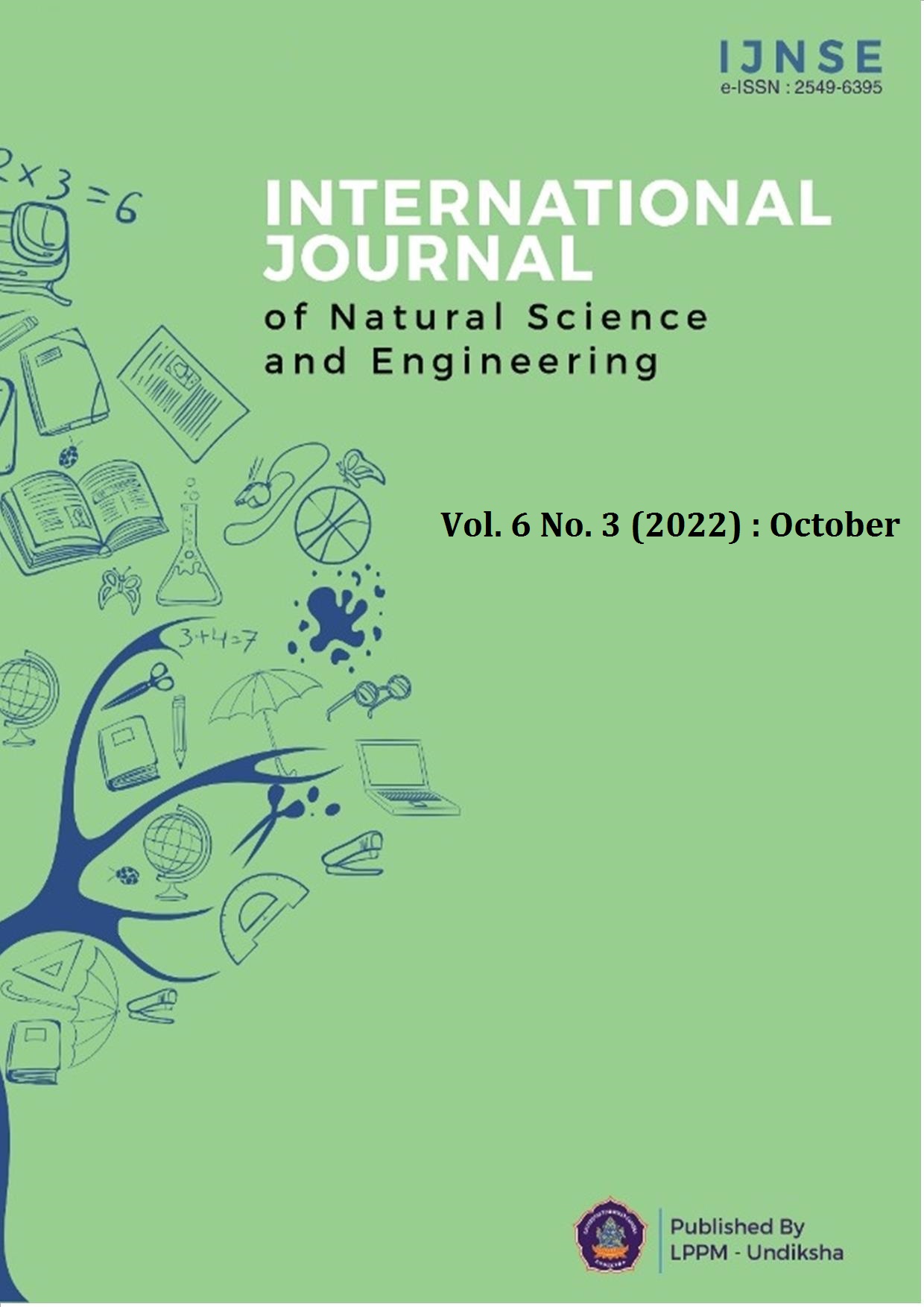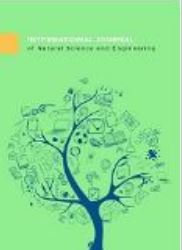3D Multimedia E-Book Based on Mobile Learning Basic Competency of Artistic Hair Coloring
DOI:
https://doi.org/10.23887/ijnse.v6i3.53593Keywords:
Development, Multimedia, E-book, Hair Trimming and ColoringAbstract
The problem of research is the low understanding of students in the subject of hair trimming and coloring which has an impact on student learning outcomes. The purpose of this study was to develop an e-book-based learning media on the subject matter of double application hair coloring at SMK. This type of research is research and development using a 4-D model. The population of this research is the students of class XI KC II SMK totaling 32 people. The data collection technique used a validity and practicality questionnaire. The data analysis technique is by calculating the score of the e-book media assessment from the questionnaire given and categorized according to the interpretation obtained. The results of the media validation study were 0.89 (very valid category) and 0.82 material validation (very valid category). The results of the practicality of student responses were 86.07% (very practical category) and from the teacher's response of 87.2 (very practical category). E-book-based learning can be said to be valid and practical to be used as teaching materials in the classroom on hair trimming and coloring subjects to improve student learning outcomes.
References
-Adam, A. S., & Suprapto, N. (2019). One-Stop Physics E-Book Package Development for Senior High School Learning Media. Int. J. Emerg. Technol. Learn, 14(19), 150–158. DOI: https://doi.org/10.3991/ijet.v14i19.10761
Agusta, A. R. (2022). Development of Learning Outcomes Assessment Instruments Using Computer Based Test (CBT). Edumaspul: Jurnal Pendidikan, 6(1), 255–267. https://doi.org/10.33487/edumaspul.v6i1.3070. DOI: https://doi.org/10.33487/edumaspul.v6i1.3070
Biggs, J. (1999). What the student does: Teaching for enhanced learning. Higher Education Research & Development, 18(1), 57–75. https://doi.org/10.1080/0729436990180105 DOI: https://doi.org/10.1080/0729436990180105
Bontis, N., Crossan, M. M., & Hulland, J. (2002). Managing an organizational learning system by aligning stocks and flows. Journal of Management Studies, 39(4), 437–469. https://doi.org/10.1111/1467-6486.t01-1-00299. DOI: https://doi.org/10.1111/1467-6486.t01-1-00299
Daryanto, M. R. (2012). Model Pembelajaran Inovatif. Gaya Media.
Dolmans, D. H., De Grave, W., Wolfhagen, I. H., & Van Der Vleuten, C. P. (2005). Problem‐based learning: Future challenges for educational practice and research. Medical Education, 39(7), 732–741. https://doi.org/10.1111/j.1365-2929.2005.02205.x. DOI: https://doi.org/10.1111/j.1365-2929.2005.02205.x
Elpira, N., & Ghufron, A. (2015). Pengaruh penggunaan media powerpoint terhadap Minat dan hasil belajar ipa siswa kelas IV SD. Jurnal Inovasi Teknologi Pendidikan, 2(1), 94–104. https://doi.org/10.21831/tp.v2i1.5207. DOI: https://doi.org/10.21831/tp.v2i1.5207
Gupta, A. K., & Wilemon, D. L. (1990). Accelerating the development of technology-based new products. California Management Review, 32(2), 24–44. https://doi.org/10.2307/411666. DOI: https://doi.org/10.2307/41166603
Hendratno, H., Yermiandhoko, Y., & Yasin, F. N. (2022). Development of Interactive Story Book For Ecoliteration Learning to Stimulate Reading Interest in Early Grade Students Elementary School. IJORER: International Journal of Recent Educational Research, 3(1), 11–31. https://doi.org/10.46245/ijorer.v3i1.179. DOI: https://doi.org/10.46245/ijorer.v3i1.179
Huang, H. C. (2013). E-reading and e-discussion: EFL learners’ perceptions of an e-book reading program. Computer Assisted Language Learning, 26(3), 258–281. https://doi.org/10.1080/09588221.2012.656313. DOI: https://doi.org/10.1080/09588221.2012.656313
Kang, Y., & Ritzhaupt, A. D. (2015). A job announcement analysis of educational technology professional positions: Knowledge, skills, and abilities. Journal of Educational Technology Systems, 43(3), 231–256. https://doi.org/10.1177/0047239515570572. DOI: https://doi.org/10.1177/0047239515570572
Kao, G. Y. M., Chiang, X. Z., & Foulsham, T. (2019). Reading behavior and the effect of embedded selfies in role-playing picture e-books: An eye-tracking investigation. Computers & Education, 136, 99–112. https://doi.org/10.1016/j.compedu.2019.03.010. DOI: https://doi.org/10.1016/j.compedu.2019.03.010
Kern, R. (2014). Technology as Pharmakon: The promise and perils of the internet for foreign language education. The Modern Language Journal, 98(1), 340–357. https://doi.org/10.1111/j.1540-4781.2014.12065.x. DOI: https://doi.org/10.1111/j.1540-4781.2014.12065.x
Lee, C. H., Chen, C. H., & Trappey, A. J. (2019). A structural service innovation approach for designing smart product service systems: Case study of smart beauty service. Advanced Engineering Informatics, 40, 154–167. https://doi.org/10.1016/j.aei.2019.04.006. DOI: https://doi.org/10.1016/j.aei.2019.04.006
Martin, K., & Quan‐Haase, A. (2013). Are e‐books replacing print books? Tradition, serendipity, and opportunity in the adoption and use of e‐books for historical research and teaching. Journal of the American Society for Information Science and Technology, 64(5), 1016–1028. https://doi.org/10.1002/asi.22801. DOI: https://doi.org/10.1002/asi.22801
Morgan, H. (2013). Multimodal children’s e-books help young learners in reading. Early Childhood Education Journal, 41(6), 477–483. https://doi.org/10.1007/s10643-013-0575-8. DOI: https://doi.org/10.1007/s10643-013-0575-8
Muqarrobin, T. F., & Kuswanto, H. (2016). Development of an android-based physics e-book to ease students’ physics learning And its influence on their learning achievement. American Journal of Engineering Research, 5(10), 223–229. http://staffnew.uny.ac.id/upload/131656346/penelitian/Development of an android-based physics e.pdf.
Nasution, A. A., Harahap, B., Harahap, R. A., & Wahdi, N. (2022). Socialization of the Use of Multimedia as a Learning Tool to Improve the Skills of MAS Darul Ilmi Students. International Journal of Community Service (IJCS), 1(1), 48–61. https://doi.org/10.55299/ijcs.v1i1.88. DOI: https://doi.org/10.55299/ijcs.v1i1.88
Nilasari, Y. (2018). Curriculum Development Based On INQF and Business/Industries Sector for Improvement Competency of Basic Pattern Making Students at Vocational High School. IOP Conference Series: Materials Science and Engineering, 012029. DOI: https://doi.org/10.1088/1757-899X/336/1/012029
Rahim, B., Usmeldi, U., & Karudin, A. (2021). Practicality Practicality of Development of Jigsaw Type of Cooperative Model Learning Module in Scientific Work Screening courses and Seminars. Jurnal Teknologi Informasi Dan Pendidikan, 14(3), 251–256. https://doi.org/10.24036/jtip.v14i3.495.
Rasmussen, L. (2018). Parasocial interaction in the digital age: An examination of relationship building and the effectiveness of YouTube celebrities. The Journal of Social Media in Society, 7(1), 280–294. https://www.thejsms.org/index.php/JSMS/article/view/364/167.
Riduwan. (2012). Skala pengukuran variabel–variabel penelitian. Alfabeta.
Savanevičienė, A., Stukaitė, D., & Šilingienė, V. (2008). Development of strategic individual competences. Engineering Economics, 58(3). https://inzeko.ktu.lt/index.php/EE/article/view/11559/6240.
Soliu, S. A., & Elisha, D. (2019). Instructional Media Provisions and Utilization for Teaching-Effectiveness in Classrooms. KIU Journal of Social Sciences, 4(4), 163–170. https://ijhumas.com/ojs/index.php/kiujoss/article/view/445/415.
Sugiyono. (2016). Metode Penelitian Kuantitatif, Kualitatif dan R&D. PT Alfabet.
Ta’rifin, A. (2018). Motivation and Management: Flexibility of the implementation of motivation theories in pesantren context. HIKMATUNA, 4(1), 145–168. https://doi.org/10.28918/hikmatuna.v4i1.1265. DOI: https://doi.org/10.28918/hikmatuna.v4i1.1265
Teece, D. J. (1986). Profiting from technological innovation: Implications for integration, collaboration, licensing and public policy. Research Policy, 15(6), 285–305. https://doi.org/10.1016/0048-7333(86)90027-2. DOI: https://doi.org/10.1016/0048-7333(86)90027-2
Trianasari, E., Yuniwati, I., & Suryantini, M. D. (2022). SEM-PLS Analysis of Factors Affecting the Effectiveness of English Course Online Learning during Covid-19 Pandemic. Jo-ELT (Journal of English Language Teaching) Fakultas Pendidikan Bahasa & Seni Prodi Pendidikan Bahasa Inggris IKIP, 9(1), 83–94. https://doi.org/10.33394/jo-elt.v9i1.5228. DOI: https://doi.org/10.33394/jo-elt.v9i1.5228
Winters, J. V. (2011). Human capital, higher education institutions, and quality of life. Regional Science and Urban Economics, 41(5), 446–454. https://doi.org/10.1016/j.regsciurbeco.2011.03.001. DOI: https://doi.org/10.1016/j.regsciurbeco.2011.03.001
Yaghoubi, A., Tabrizi, J. S., Mirinazhad, M. M., Azami, S., Naghavi-Behzad, M., & Ghojazadeh, M. (2012). Quality of life in cardiovascular patients in Iran and factors affecting it: a systematic review. Journal of Cardiovascular and Thoracic Research, 4(4), 95. https://doi.org/10.5681/jcvtr.2012.024.





